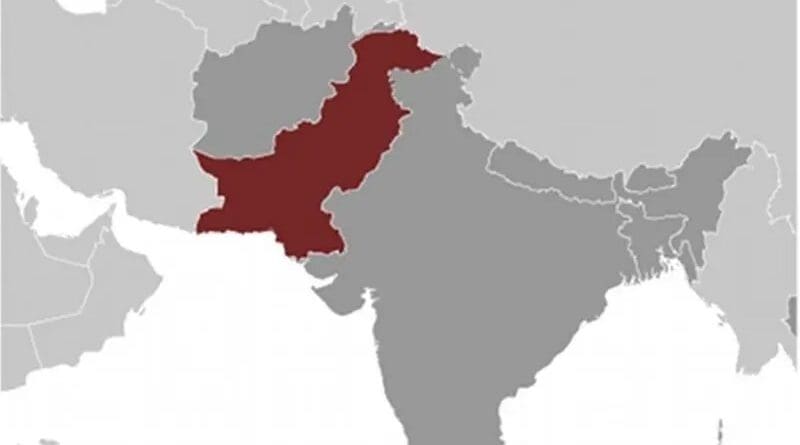Capitulation To Militancy: A Pattern In Pakistan? – Analysis
Whether targeting suspected nuclear weapons was one of the objectives of the eight Tehrik-e-Taliban Pakistan (TTP) suicide attackers who engaged security forces at the Pakistan Air Force (PAF)’s Kamra base in a two-hour long night raid on 16 August is debatable, the attack did underline two crucial points. One, it was carried out before the end of the pious month of Ramadan, reiterating the fact that terrorist intentions are not limited by religious strictures, even when they are fighting to establish an Islamic state governed byShariah. Two, the attack came days before the Pakistan military’s reported plans of undertaking military operations in the North Waziristan Agency (NWA) hounding out the Haqqani Network (HN) and TTP leader Hakimullah Mehsud. The TTP, thus, became the first to fire the salvo and this might shape the Pakistan military’s response to the TTP in coming days.
The intention of the TTP suicide bombers looked to be damaging one of the expensive airborne early warning planes; the Saab Erieyes, the Chinese-origin JF-17 fighters, or others located at the base. The attackers did manage to damage at least one plane and the TTP described the operation as a success, carried out in retaliation against the killing of its leader Baitullah Mehsud and Al Qaeda (AQ) leader Osama bin Laden. A TTP spokesperson asserted that the group has capacity to carry out attacks “at will” and vowed to “target other locations” in coming days. More than the security of nuclear weapons, which may or may not have been at the base, the statement should be a source of immense worry to the military.
Lest the TTP’s announcement not be construed as a false claim, it has carried out several such attacks on military/security force installations in the past months and years, including two previous attacks (December 2007 and October 2009) in the proximity of the Kamra base itself. Amid claims of the declining AQ capacities in the Af-Pak region, the TTP’s strength remains almost un-dented.
It is with this backdrop that the Pakistan’s military’s proposed operation in the North Waziristan province assumes importance. Indications are, however, that this operation (coined ‘Tight Screw’) will be delayed significantly or have extremely limited focus, with a minimum impact on TTP’s operational capacities.
Pakistani media is rife with reports of troop movement, soldiers being summoned back from holidays, statements from anonymous senior army officials- each pointing at the near-term launch of the an operation in the NWA. In addition, on 16 August, Gen James N Mattis, Commander of United States’ Central Command (CENTCOM), arrived in Islamabad and held discussions with Army Chief General Ashfaq Pervaiz Kayani to possibly discuss the operations. In spite of such hype and brouhaha, the ultimate delivery capacity of this operation will be limited, primarily because of two self-imposed limitations.
Firstly, Pakistan wants the operation to target only the TTP and not the HN. While targeting the HN’s sanctuaries has been a longstanding demand of the United States, Pakistan continues to insist that the TTP, with an avowed Pakistan-centric objective must be eliminated first, before the HN is targeted. Pakistani media recently carried the following statement of an anonymous senior military official which summed up the approach. “The idea is not to go against Haqqani straight … we have suggested taking on Hakimullah and his group first and the Americans have endorsed the idea.” Thus, the military operation will serve only the Pakistani interests and not work towards the stabilisation of Afghanistan. The HN, a strategic asset of Pakistan, will remain unharmed.
Secondly, Pakistan intends to choose its own time and agenda for the operation, without any external pressure. In his 17 August statement, Army chief General Ashfaq Parvez Kayani indicated, “We might, if necessary, undertake operations in NWA, in the timeframe of our choosing and determined only by our political and military requirements. It will never be a result of any outside pressure.” While Kayani’s statement is an attempt to satiate the anti-west popular mood in Pakistan, from the point of view of denting the terrorist capacities, the operation is a goner before its launch.
There is a pattern to the Pakistani military’s limited engagement with the militants. Its past anti-militant operations, mostly under pressure from the United States, have either been extremely limited in their achievements or have been overshadowed by the state’s inherent inclination to conclude area specific peace agreements allowing the militants to have a free run. Such instruments of capitulation have neither guaranteed permanent peace in areas under agreement nor have restrained the militants from pursuing an anti-state agenda, in Pakistan’s heartland.
On 13 August, US Defence Secretary Leon Panetta built up hopes on Operation Tight Screw that would purge the NWA of terrorist presence and aid the stabilization efforts in Afghanistan. “Frankly, I’d lost hope that they were going to do anything about it. But it does appear that they in fact are going to take that step”, Panetta said in an interview. In a few weeks from now, Panetta is bound to wonder if he had simply overshot his mouth, little too fast.
This article appeared at Wikistrat and is reprinted with permission.

